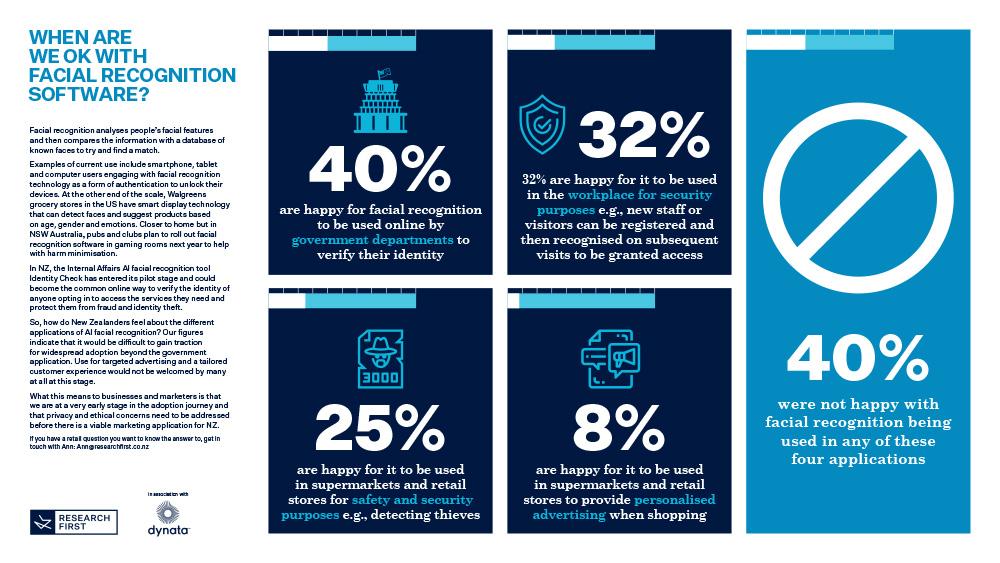When are we OK with facial recognition software?
Facial recognition analyses people’s facial features and then compares the information with a database of known faces to try and find a match.
Examples of current use include smartphone, tablet and computer users engaging with facial recognition technology as a form of authentication to unlock their devices. At the other end of the scale, Walgreens grocery stores in the US have smart display technology that can detect faces and suggest products based on age, gender and emotions. Closer to home but in NSW Australia, pubs and clubs plan to roll out facial recognition software in gaming rooms next year to help with harm minimisation.
In NZ, the Internal Affairs AI facial recognition tool Identity Check has entered its pilot stage and could become the common online way to verify the identity of anyone opting in to access the services they need and protect them from fraud and identity theft.
So, how do New Zealanders feel about the different applications of AI facial recognition? Our figures indicate that it would be difficult to gain traction for widespread adoption beyond the government application. Use for targeted advertising and a tailored customer experience would not be welcomed by many at all at this stage.
What this means to businesses and marketers is that we are at a very early stage in the adoption journey and that privacy and ethical concerns need to be addressed before there is a viable marketing application for NZ.
If you have a retail question you want to know the answer to, get in touch with Ann: Ann@researchfirst.co.nz



